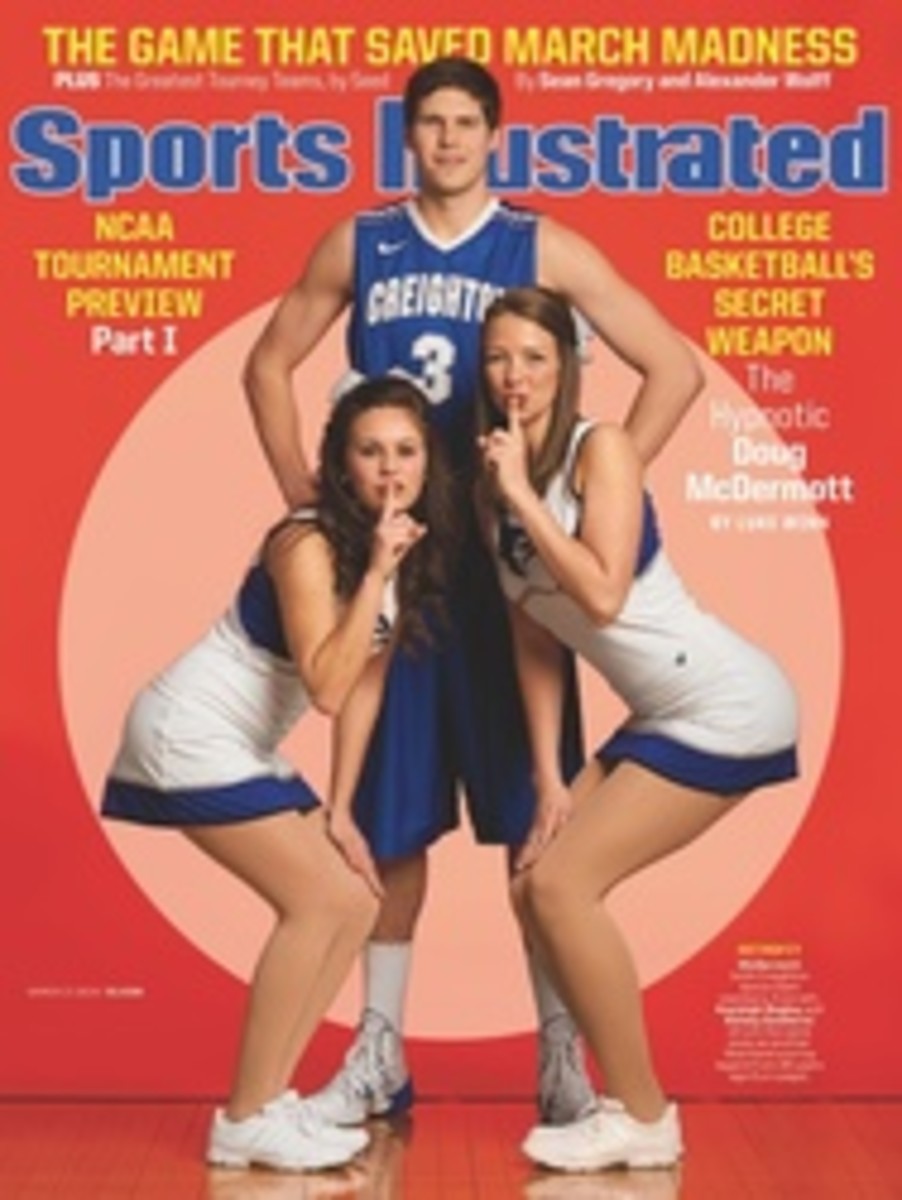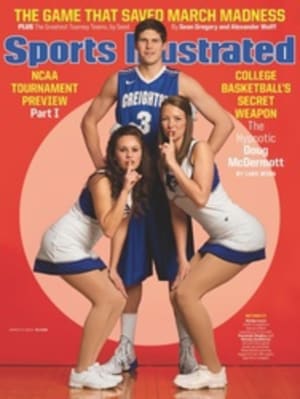
More Than Meets The Eye
Jason Kipnis could always rake, but as a college outfielder he didn't look the part of a big league star. Enter the Indians, who knew that sometimes imagination is the key to player development. Their reward: one of the game's top second basemen
LOOK AT the prospect. What do you see? The player he is, the player he isn't, or the player he might someday be?
You see the line drives he rips to the opposite field—they look like the work of someone who could rake in the big leagues. But he's 5'11" and 180 pounds, small for a centerfielder—none too big for a modern middle infielder, actually. He's not fast, not adept with the glove. He's a tweener in scouting parlance, a label that can be the kiss of death in this game.
Scouting is one part detective work, two parts imagination. In some ways assessing a 21-year-old college star is easy in the information age. But scouting is also about divining who that college star will become. In 2009, Jason Kipnis was tearing up the Pac-10 as a centerfielder at Arizona State, but it was still hard to imagine a player with his size and physical tools as anything more than a fourth outfielder in the major leagues. The Indians, though, looked at Kipnis and imagined something else: an All-Star at second base. Five years later he is the best player on a team that won 92 games last season—"He single-handedly carried us for long stretches last season," says manager Terry Francona—and is in the discussion of the best second basemen not named Robinson Cano. Given his age (26), position and salary (he made $509,000 last season), he's one of the most valuable players in the game.
The story of Jason Kipnis is that of a player overcoming labels in the development process. It's a reminder that imagination in baseball is now more important than ever.
ONE OF the misconceptions of Moneyball is that it was about an ideological victory of statheads over scouts. But the statistical revolution did not kill scouting. It's true that in the early 2000s some of the most sabermetrically inclined front offices slashed their eyes-and-ears budgets. In recent years, however, the most innovative front offices have reinvested. The scouting budget of the A's, in fact, has never been higher.
"Moneyball was about finding value where other people don't, and part of that comes from scouting," says Indians amateur scouting director Brad Grant. "The scouts have become a very valuable asset, especially now that the dollars in the [draft] are kind of set—if you can find information other scouts can't get, if you can really get to know a player and get to know what drives them, that's a huge valuable asset.
"Paul Cogan was able to do that for us with Jason."
In 2008, Cogan, the Indians' West Coast scout for over two decades, became intrigued with Kipnis, who was drafted in the fourth round by the Padres that year but returned to Arizona State for his junior season. By then the labels had already been attached: One MLB.com scouting report said Kipnis had "average tools across the board and ... doesn't profile as an everyday guy at any one outfield position." But Kipnis hit .384 with a .497 OBP, 16 home runs and 27 steals in 63 games as a junior and was named Pac-10 player of the year. Plus, Cogan liked how hard he played. In one of his many conversations with Pat Murphy, the Sun Devils' coach, Murphy brought up the idea of Kipnis's playing another position. "I think Kip would make a great second baseman," he said.
Kipnis had hardly played middle infield since high school, and a change from the outfield would be bold. "You see it happen the other way around all the time," says Indians general manager Chris Antonetti. "Anytime you're going to a position where the game gets faster, it's very difficult."
But given the scarcity of second basemen in the organization, Cleveland's player-development staff warmed to the idea of a switch. They liked Kipnis so much that they considered taking him with their first pick in 2009. Instead, they counted on him still being there later in the draft, took pitcher Alex White with the 15th pick and waited.
Kipnis watched the draft despondently from his childhood home in Northbrook, Ill. "Seeing guys being taken ahead of me—guys I had better stats than in college, guys I played with in the Cape Cod league and outplayed—that was tough," he says. "Yeah, they were bigger or faster or taller and could project more, but all I'm thinking is, I'm better than these guys."
Grant fought for the Indians to take Kipnis in the second round, 63rd overall. To many in the game even that was a reach for an undersized player who projected as a fourth outfielder. But at second base, the Indians thought, Kipnis's size could be an asset. Baseball Prospectus's player-projection metric PECOTA has shown that for some second basemen with an advanced approach at the plate—think Dustin Pedroia, another diminutive ASU alum—a lack of height may actually be an advantage.
The Indians had faith that Kipnis could make the switch from centerfield. "We kept hearing story after story from our scouts about how competitive he was," says Antonetti. "That drive came out when he worked extraordinarily hard to make the transition work."
I'VE ALWAYS played with a chip on my shoulder," Kipnis said one recent morning at the Indians' training facility in Goodyear, Ariz. "And you know what? I never want it to go away. You always want to have that motivation burning inside you."
Kipnis carried that chip when he left Glenbrook North High in Northbrook, where he was an All-State outfielder and conference MVP but received just two scholarship offers: one to Eastern Illinois of the Ohio Valley Conference and a $400 book scholarship to Kentucky. He brought that chip to Kentucky, where he was redshirted his freshman year. And he had the chip when he arrived in the minors. A week after he was drafted, Kipnis reported to the short-season Class A Mahoning Valley Scrappers. Manager Travis Fryman sat Kipnis at first because he was working his way back from an elbow injury suffered during the College World Series, which prompted Kipnis to barge into Fryman's office. "If you're not going to play me," he told Fryman, "I want to be traded." The Indians now joke that it was the fastest play-me-or-trade-me demand in history.
Kipnis progressed quickly enough to be called up after two years in the minors. He is no defensive whiz, an average big league second baseman ranked 12th in Ultimate Zone Rating over the past two years among players with 2,000 innings at the position. "He's still working at his footwork, some of the mechanics of taking a ground ball," says Francona. "There are times when you can tell he's an outfielder." But at the plate he more than compensates. As a rookie in 2011, Kipnis put up an .841 OPS in 150 plate appearances, and as an All-Star last season he hit .284 with 17 home runs, 30 stolen bases, an .818 OPS and the seventh-highest offensive WAR (5.8) in the American League. That value figures to rise as his power continues to develop. "Power is always what comes late, and you can see it coming," says Francona.
And Kipnis still plays the game as if he has everything to prove. That's why he runs to first "as hard as any player I've ever seen," says Francona. That's why he lays out for every extra inch on the field, diving and sliding so much that he went through eight uniforms last summer alone. In the Indians' clubhouse he proudly answers to the nickname Dirtbag. "To me dirtbag means ballplayer," he says, "and that's a label I feel like I've been fighting for my whole career."
Sun-kissed Stars
After turning out the likes of Sal Bando, Reggie Jackson and Barry Bonds, Arizona State fell off as a talent factory in the '90s. But Jason Kipnis is part of a new wave of desert-bred studs
Dustin Pedroia Red Sox The rich man's Kipnis: A second-round pick in 2004, the '08 AL MVP (left, at ASU) is undersized and perpetually dirty
Andre Ethier Dodgers Drafted by Oakland in the second round in '03, now one of four All-Star caliber players in the Dodgers' outfield
Mike Leake Reds The righty was Cincinnati's first-round pick in '09; since '11 he's been a fixture in the rotation and had a 3.37 ERA last year
Eric Sogard A's The nerdy man's Kipnis: A Padres second-round pick in '07, the 5'10", bespectacled infielder is now a cult hero in Oakland
Deven Marrero Red Sox A stellar defensive shortstop, he was Boston's first-round pick in '12 and starts this year as one of its top prospects
TWO PHOTOS
Photograph by BRACE HEMMELGARN/ MINNESOTA TWINS/GETTY IMAGES
JOHN BIEVER FOP SPORTS ILLUSTRATED
DIRT DEVIL A long shot out of Arizona State, much like the even shorter Pedroia, Kipnis has made himself at home in Cleveland with his big bat and uni-destroying style.
PHOTO
RICK SCUTERI/USA TODAY SPORTS

